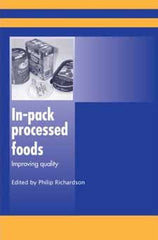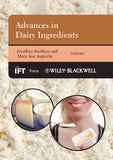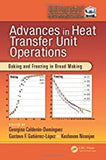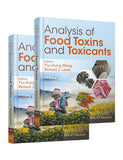In-Pack Processed Foods Improving Quality edited by Philip Richardson
Improving Quality
edited by Philip Richardson
In-Pack Processed Foods addresses recent developments which have enabled the production of in-pack processed foods with improved sensory quality as well as new types of heat-preserved products packaged in innovative containers. It covers advances in packaging formats and processing technologies and their application to produce higher quality, safer foods.
Features:
Part One covers innovative can designs and non-traditional packaging formats, such as retort pouches.
Part Two reviews the developments in processing and process control technology required by newer types of packaging.
Part Three addresses the safety of in-pack processed foods, including concerns over pathogens and hazardous compounds in processed foods.
Part Four contains chapters on novel methods to optimise the quality of particular types of in-pack processed foods such as fruit and vegetables, meat, poultry and fish products.
Contents
Part 1: Advances in packaging Formats for In-Pack Processed Foods
Advances in can design and the impact of sterilisation systems on container specifications
- The influence of sterilization systems on container specifications
- Case histories illustrating the influence of sterilisation systems on can performance
Retortable pouches
- Materials for retortable pouches
- Filling
- Processing requirements
- Distribution
Improving retortable plastics
- Benefits and markets for retortable plastics
- Impact of retortable plastics in food quality and safety
- Improving the performance of retortable plastics
- Effects of complementary and alternative preservation technologies on plastics performance
Advances in sealing and seaming and methods to detect defects
- The importance of sealing
- Sealing methods
- Seaming
- Detection methods
Part 2: Advances in Processing Technology
Advances in retort equipment and control systems
- Retort process types
- New packaging developments advance control systems
- Advances in retort technology
The Zinetec Shaka™ retort and product quality
- Overview of current retorting systems and their limitations
- The Shaka™ process
- Product quality and the Shaka™ process
- Commercialisation of Shaka™ process
Optimising the processing of flexible containers,p>
- Challenges in processing flexible containers
- Optimising the processing of flexible containers
- Setting up an overpressure profile
- Equipment for establishing an overpressure profile
- Case study implementing pressure profiles
- Addresses of companies
Wireless data loggers to study heat penetration in retorted foods
- Introduction to temperature measurement technology for retorted foods
- Overview of heat penetration theory in retorted foods
- History of wireless data loggers
- Fixtures and fittings used for heat penetration studies
- New developments in wireless data loggers
Advances in indicators to monitor production of in-pack processed foods
- The potential of time-temperature integrators
- Current state of the art and limitations
- Producing time-temperature integrators to monitor the thermal sterilisation of retorted foods
- Future trends with pasteurisation and sterilisation time-temperature integrators
On-line correction of in-pack processing of foods and validation of automated processes to improve product quality
- Process temperature deviations during sterilization
- On-line correction of in-pack processing of foods
- Simulation of on-line correction methods for continuous retorts
- Future trends and validation of automated processes
Neural network method of modelling heat penetration during retorting
- Principles of neural networks
- Application of neural networks in food thermal processing
The role of Computational Fluid Dynamics in the improvement of rotary thermal processes
- Methodology
- Using validated computational fluid dynamics simulations
Part 3: Safety of In-Pack Processed Foods
Emerging pathogens of concern in in-pack heat processed foods
- Changing pattern in foodborne disease
- Reasons for emergence
- Emerging pathogens
- Effect of reducing severity of heat treatments in heat-processed foods
Foodborne clostridia and the safety of in-pack preserved foods
- Characteristics of clostridium botulinum and foodborne botulism
- Control of foodborne botulism hazard presented by proteolytic clostridium botulinum
- Control of foodborne botulism hazard presented by non-proteolytic clostridium botulinum
- Recommendations and guidelines to ensure the safe production of in-pack processed foods with respect to clostridium botulinum
- Improving prediction of the behaviour of clostridium botulinum in food environments
- Recent advances in understanding of the functional genomics and physiology of foodborne clostridia
Hazardous compounds in processed foods
- Polycyclic aromatic hydrocarbons
- Heterocyclic aromatic amines
- Acrylamide
- Furans
- Chloropropanols
Part 4: Improving the Quality of Particular In-Pack Processed Products
Use of the natural food preservatives, nisin and natamycin, to reduce detrimental thermal impact on product quality
- Heat processes
- Effect of heat processing on product quality
- Effect of heat against micro-organisms
- Use of the bacteriocin, nisin, as an adjunct to heat processes enabling improvement in product quality
- Use of natamycin, as an adjunct to heat processes enabling improvement in product quality
Novel methods to optimise the quality of in-pack processed fruit and vegetables: high pressure processing
- High pressure processing: general concept
- Effect of high pressure processing on enzyme activity and stability
- Effect of high pressure processing on nutrient stability and bioavailability
- Effect of high pressure processing on color and flavour
- Effect of high pressure processing on texture
Novel methods to improve the safety and quality of in-pack processed ready-to-eat meat and poultry products
- The need for ready-to-eat (RTE) meat in-package processing
- Methods to optimize safety and quality
- Use of antimicrobials
- Combining in-package pasteurization with antimicrobials
- High-pressure processing
Novel methods to optimise the nutritional and sensory quality of in-pack processed fish products
- The range of in-pack thermally processed fish products
- Novel methods to optimize the quality of in-pack processed fish products
Index


















